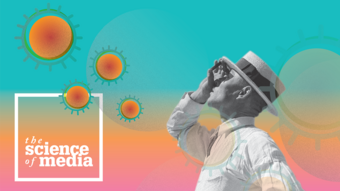
As it did elsewhere, COVID-19 has impacted B2B marketing in several ways. What are the most significant changes and, as we see the pandemic fade, how can we take advantage?
1. What’s in a name? A conference is not a show or a symposium; all events are not created equal
Pre-COVID, there was a clear trend for conferences to try to be shows, and for shows to add conference-style content – and for all events to enter into some strange competition where bigger + more costly = better.
During the virtual COVID days, we discovered that audiences will attend online events, but in different ways. For content – by which I mean individuals appearing as "talking heads" or in panels, "fireside" chats and interviews – there were actually MORE people per event than prior live iterations. But no one visited virtual booths or did much "virtual networking" – not surprising because a website is better than a virtual booth, and LinkedIn / Zoom is there for networking.
We discovered everyone missed getting together – especially with people you don’t know. What’s happening now and how can we take advantage?
2. Hollywood in Biotech! Well, not really, but we can become Executive Producers...
The desire for online content during COVID lockdowns also translated to successful self-organized events for many marketers. Though it’s always possible to sponsor a media company’s event at JP Morgan or CPHI online, it’s expensive, and your brand presence is limited.
Several marketers have put together successful half-day online conferences by themselves or with minimal agency or media company assistance. This independence offers control of the agenda and a useful focus on your experts or brand advocates – all at a lower price. There are two keys to success here:
3. If a tree falls in a forest and there’s no one to hear it, does it make a sound?
Like that oft-referenced tree, a white paper at the bottom of a publisher’s site won’t make any noise either!
Though digital is all the rage – and ever more important post-COVID, where even the most reluctant audiences are online – too many folks still report "put it on the website" or "tweet it out" (to their 10 or so followers) as their key digital activities.
Digital marketing is all about the math! How many people saw it? Where they the right people? How many times? What is the engagement? If the result is not sufficient to make a difference in your business, you’re wasting time and effort.
Make sure you have scale, variety, and focus to get it right. And if at first you don’t succeed, give thought to what has worked and what didn’t, substituting bad parts for new ideas. Too many digital marketers boast of great traceability, but never stop to think about the data they’ve generated.
4. You can be famous! OK. Maybe not – but your experts could be
One good friend has always famously pronounced: "If you are not published, you are not an expert!" With a high ongoing appetite for expert content, it’s easier than ever to get your experts published (or tweeted, posted, YouTubed, or podcasted).
During COVID, customers have gotten used to looking for and scrolling through interesting content – therein generating good marketing leads.
First, plan around your key topics, get a commitment from your experts, set the timing and provide enough support in recording (sound or video), writing/editing, graphics, vital project management, and the right headshots (important!).
Second, line up proper noise making and signal receiving apparatus (prep digital, social and PR teams, then measure, measure, measure. Make your experts famous – and make sure they know it!
5. Eggflation is here – and it hasn’t bypassed B2B media. Mitigate – then take advantage.
Not only is inflation driving media costs up, but, in digital marketing, more customers are going online for content - virtual events, social, podcasts, and videos. All have driven competition for the best spots and raised prices for sponsorships, email sends, and speaking spots. There are several ways to mitigate:
6. Be social!
Social media is finally penetrating the most conservative sectors. Potential customers likely won’t engage in an open discussion, but they are clicking your content and reading your news, announcements and event invitations. This activity has accelerated through COVID and will continue to do so.
In short, COVID accelerated and clarified a number of B2B marketing trends. It’s easy to lose focus in B2B because there are many moving parts, though we can always come back to what’s important and get that right.
Whatever the weather, it’s up to us to take advantage, making smart, cost-efficient, customer-focused decisions to build our brands and drive growth.

Like what you are reading?
Subscribe to The Science of Media newsletter to get expert insights into trends in B2B marketing direct to your inbox.